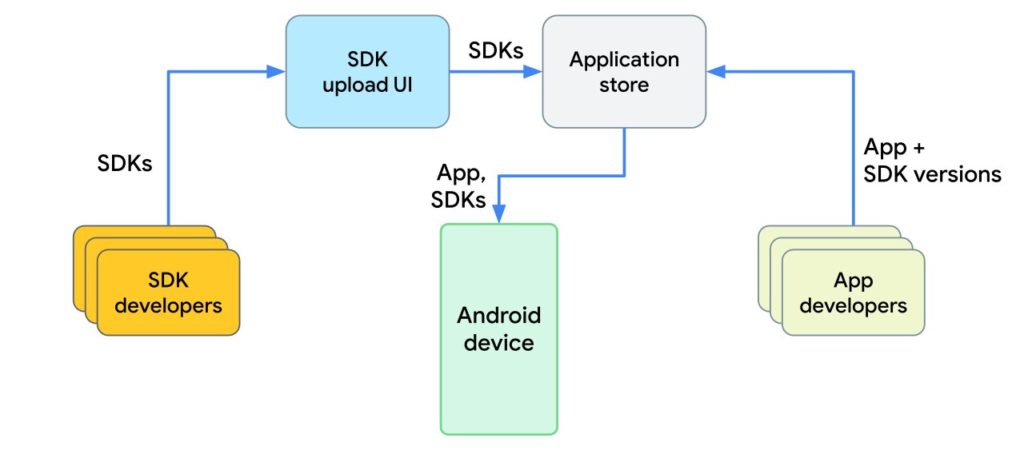Author: Steffen Meyer, Mobile Marketing Content Specialist
The new Android 13 nicknamed ‘Tiramisu’ is being rolled out at the moment. App marketers should know about these two changes:
- Users have to consent to get push notifications
- Marketing SDKs get their own sandbox
While the first one is a very hands-on topic for campaigners, the second one falls into the domain of the tech folks. However, you should know about the changes in general and what it means for the marketing business to be up to date.
Push Notifications – Update fast and establish
a Push Primer
In Android 13, push notifications will be deactivated by default and the user has to give permission for each app. However, the procedure depends on various factors:
- Existing apps on the phone will be allowed to send push notifications temporarily. But when users open the app for the first time on the new operating system they will be prompted with the choice to further allow or forbid the app to send pushes.
- Newly installed apps on Android 13 are treated differently depending on the system version they are targeting:
- Apps that target Android 13, can determine when to ask their users if they allow pushes or not. So publishers can implement a process to ease users into giving consent. However, until the user gives their consent, no push notifications will be possible.
- Apps that target Android 12, won’t have the chance for such a strategy: On the first start of the app, users will be prompted immediately if they want to opt out or not, leaving no time to explain the benefits of saying Yes.
Therefore, updating the app to Android 13 as soon as possible is a wise move. It is even wiser to quickly implement a strategy, a so-called Push Primer, to raise your opt-in rate. In the best case, your app is equipped with such a campaign for its iPhone version, since iOS users already have to opt-in for receiving pushes.
If you don’t, the basic strategy for a push primer explains how valuable your push notifications are before asking users for their consent. This may prevent you from depressingly low opt-in rates.
But don’t get your hopes up too high: The opt-in rate will most certainly drop anyways. Giving people a prominent option to receive less notifications on their phones, will probably be selected more often than a checkbox hidden in the settings.
SDKRuntime – Another challenge for MMPs
Professional app marketers work together with Mobile Measurement Partners (MMPs) to track the amount of downloads and evaluate if an ad campaign succeeds or fails. For this to work, you need to implement a so-called Software Development Kit (SDK) into the app you wish to track.
Up until Android 12 SDKs are a part of the app, receiving the same device permissions as the app they are integrated in. Since this creates opportunities for vicious SDKs to grab data they are not supposed to, Android 13 implements a change with SDKRuntime.
In the new operating system, SDKs are uploaded separately from apps to the store and get their own permissions. Apps on the other hand, define which SDK version they need to use, and according to this specified dependencies, the SDK will be downloaded and linked to the app. Android officially maps it out like this:
Before:

After:

While it will mostly make it really difficult for shady SDKs to silently gather data, it is hard to say how this will affect the app marketing industry in general. Some argue it could mean trouble for MMPs, without giving a detailled explanation onto why.
It certainly adds one more challenge to MMPs while they already have to cope with self-attribution and new privacy rules.
Delve in deeper into app marketing
While waiting how the MMPs react, get our Marketing Master Map and sign up for our newsletter to delve in deeper into the app marketing business. You are always welcome to drop us a line, too.
💡 Knowledge sharing is at the core of what we do. Become part of our community on LinkedIn to learn how to make apps succeed in the competitive mobile landscape.
Helpful Links:



